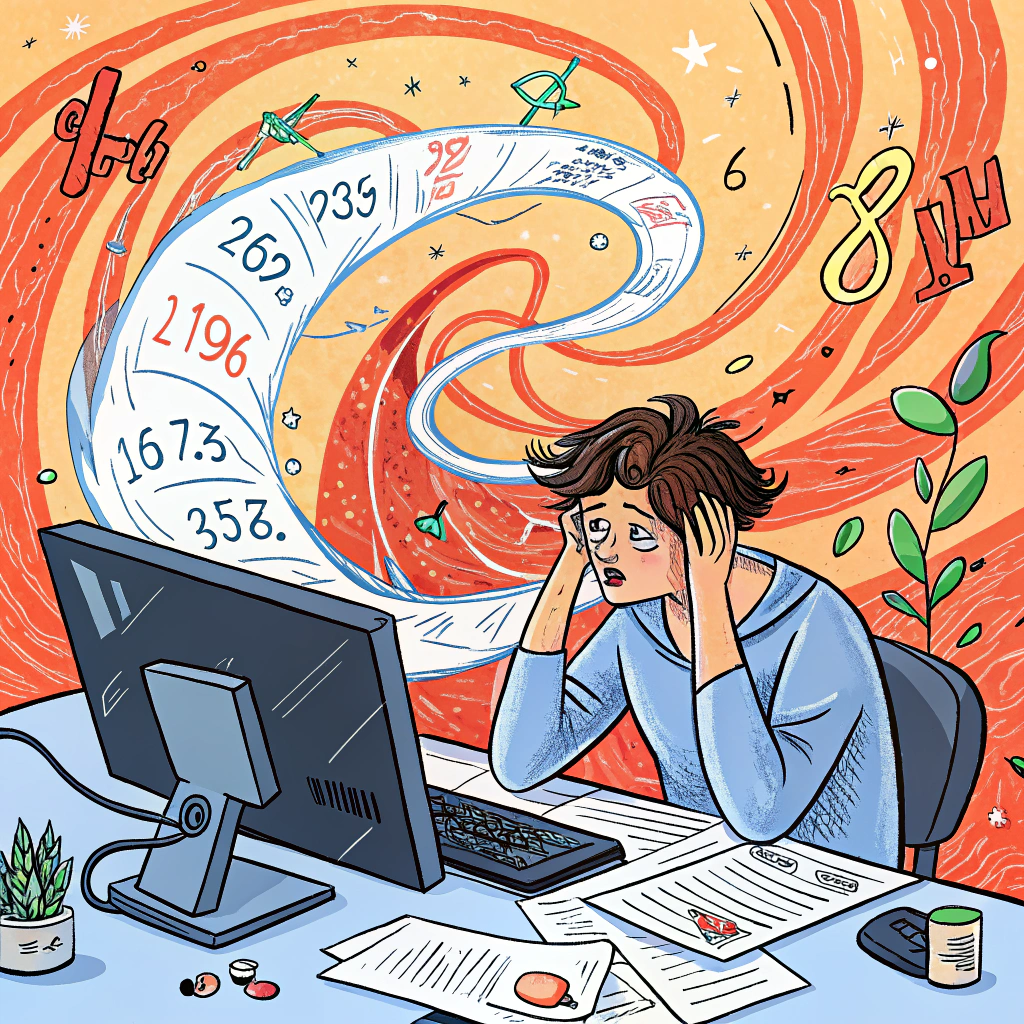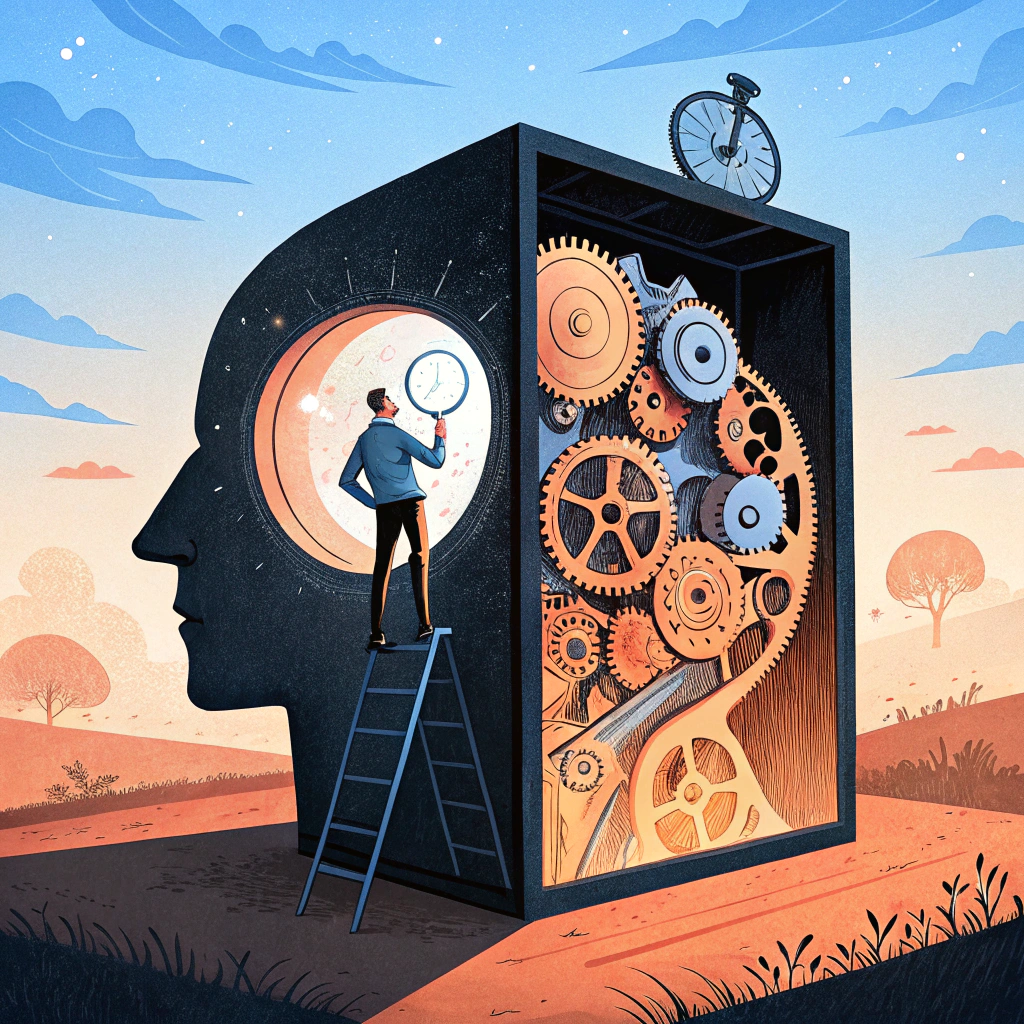If you’ve been in business for more than three seconds – yep, that’s the official benchmark – you’ve probably heard the gospel of market research.
“It’s the most important thing ever. Nailing it practically guarantees success. I would trade my son for a good market research document.”
Or… variations of that. My point is that everyone knows how important it is to know your buyer persona and market precisely.
But does everyone know how to create the perfect buyer persona? Does everyone bother to do it?

Mmmm… I’m not so sure.
The rumors are true – the most important part when it comes to creating and selling your product is understanding exactly what your ideal customer wants and what they struggle with.
Here, using a so-called ‘buyer black box’ is a damn useful thing (if you don’t know what that is, you’ll find out soon enough…)
And no, you don’t need to know absolutely everything about people’s lives (like bathroom activities), I’ll show you exactly what you need to find to have a crystal clear buyer persona.
It doesn’t take as long as you might think.
If you make the mistake of trying to attract everyone, you’ll end up making 0 sales. You can’t help everyone, and you shouldn’t have to.
The best way to give value to the world – and make money – is to specialize in helping one specific type of person in the BEST way you can.
The more detailed you make your ‘Buyer Persona Document’, the more they will resonate with your brand.
Seriously, who are your ideal customers? What do they define themselves as? How do they look at themselves and what words do they use to describe their own identities?
This might be the most important part of your customer persona.
In our case, we mostly target people who think of themselves as entrepreneurs or startup founders.
In our messaging, we make sure to directly speak to you, an aspiring entrepreneur reading this article.
That makes you feel the beautiful emotion of: “Ah, yes, this is for me.”
Obviously, you can go deeper with this. You can define where they’re from, their social status, salary, lifestyle, family composition, values, interests, beliefs, etc.
Think of every angle that makes up their identity.
We want to find people’s pain points, so we can basically press on them.
When we call out the things that bother our target audience, they once again feel understood.
“If this brand understands exactly what I feel and think, for sure they also have the solution” – your customers as soon as you finish reading this article.
If you’re selling ovens, find out the negative thoughts and feelings that ovenless people have. Also think about what ovenful people struggle with, so you can make an even better oven.
For example, look at our Unit Economics course. We know you want to focus on your product, instead of scary numbers and formulas. But without calculating some key metrics, you’ll end up lost and your funnel won’t function well.
We know you hate the thought of calculating Customer Lifetime Values and Costs of Acquisitions. That’s a pain point.
So we made a very simple course about calculating the key metrics, so you don’t have to be scared of numbers anymore.
That’s how you use a pain point in an empathetic way. It’s really not about manipulating your customers, but about showing you understand them.
I think this one pretty much speaks for itself. What do your ideal customers… well… desire?
I lied. It’s not that simple. We have some surface desires (like making more money) and some deeper desires (like proving your parents wrong).
Also… people are liars. They lie to themselves, constantly. How many of us told ourselves that we have a BURNING desire to start running every morning and chug fewer pints?
… and how many of us succeeded? Yeah. Not everyone. So always discount what people tell you by, say, 2.
Not only do we lie – we are also lazy, lazy human beings. We all have a HUGE desire, which is to change nothing and keep doing what we’re used to.
“Why bother with a new financial tool if I can watch that new Severance series on Apple and continue counting my biz money in good old spreadsheets tomorrow?”
Actionable step: Consider ‘doing nothing’ as your biggest competitor.
Or am I lazily lying right now? 😏
Make a list of all surface desires your buyer persona has – and what deeper desires are hiding behind them.
In your messaging, try to speak to those deeper desires, if you want to make people tick and click.
What’s keeping your ideal customer from taking action and buying your product? I mean, if the journey to your product had no obstacles, people would be buying it all day. They simply couldn’t resist.
But that doesn’t happen in real life (sadly)… Because every buying process has Obstacles. They can come from within or from the outside world.
Yes, that absolutely is step number 5.
Look, our free 8D Framework to Launch Your Business is a step-by-step guide designed to get you from zero to having a fully launched and marketed product.
It’s an easy read, no worries there.
You could do much worse with your time than to check it out here:
Usually, a ‘black box’ is something that processes an input and gives an output, but you don’t really understand what happens inside.
For example, your TV. It gets inputs, does some unknown stuff in the middle (unless you’re a TV fanatic, in that case, not cool ruining the fun like that), and then shows you pixels on the screen.
The human mind is the same. However, most people mistakenly believe that the middle process is a rational one. That’s why they give logical inputs, expecting logical outcomes.
Spoiler alert: The buyer black box inside our heads does not, in fact, work like that.

We’re emotional beings with an emotional brain – and I’ll give you a quick psychology lecture so you can abuse people’s brains for your own personal gain 🙂
Every second, our brain processes trillions of different activities. It’s no surprise that it looks for mental shortcuts to use in various situations to reduce cognitive load and conserve energy.
These strategies are called heuristics.
Take the availability heuristic, for example. People often make decisions based on the information that’s most easily available to them. Since that info is most readily available in their memory, that’s what they’ll use to make a decision.
That’s why posting regular content and being top of mind is so important.
Another heuristic I want to tell you about is anchoring. We’re overly influenced by the first bit of information we hear. If you’re able to anchor your customers’ expectations and surprise them with a lower price, that price will look like a much better deal.
TV shops use this heuristic by putting the most expensive TVs at the beginning of the store. Everything else looks more affordable in comparison.
There are more heuristics you can use, which I recommend you research by yourself. I’ll move on to other exciting topics now.
In summary, if you want to influence the buyer’s black box, focus on people’s emotions. Employ tons of heuristics and use the 4 steps we talked about to show your customers that you understand them.
(And maybe, just maybe, they’ll choose you over the competition.)
Researching your target audience is really important, but surveying is next level. You can find out the exact words people use, their precise thoughts and feelings.
But sadly, people do it wrong, and it ends up being useless.
They ask the wrong questions, such as “How do you like my website? Would you use it?”
It’s the SAME scenario like when a waiter asks if you enjoyed your food. Of course you’ll say yes, even if you hated it.
Instead, ask questions that beg for criticism. If you ask “Do you think my website is perfect?”, you’re likely to get a ‘no’. From then on, you can get actually good feedback.
‘Yes’ often doesn’t show real intent. It’s just a polite way of saying “f*ck off”.
Also, look at users’ behaviors. Track conversion rates, churn, and retention rates. Look at their lifetime value. That’s how you get the objective truth. That’s called Quantitative Research in product management, versus Qualitative Research which is more about interviewing the users.
Pro tip: Good clients aren’t ‘good’ just because of their interests and identities – their purchasing behavior also matters a lot. Think about targeting superconsumers, the clients who consistently spend more and make repeat purchases.
Let’s say you’re building a course. Think about whether you want to target absolute beginners with no money, or intermediate/advanced entrepreneurs who have the capital to pay you well.
I can’t even count the amount of times I heard some influencer say “X is too saturated, don’t bother entering that market”.
I’ll let you in on a little secret…
…there’s no such thing as a “saturated market”. Markets exist only in consumers’ minds.
And they have short memories and quickly forget and switch preferences. We all do. New consumers are constantly entering the market, with no prior context to “forget”.
There are a gazillion blogs out there, but we didn’t think “Oh no, it’s too saturated, womp womp.”
Bloggers fade in and out of the spotlight all the time, and no matter how many blogs exist, there’s always an opportunity to replace a blog that’s fading out.
You just have to make your product extremely memorable and distinct enough to appeal to a specific customer persona. Scratch that, not just to appeal – but to make them adore you.
The more you know your target audience, the easier it is to do that.
“B-b-but this doesn’t apply to my indust–”
Yes, yes it does. The concept even applies to software products, where the costs of switching are higher due to inertia. It’s still possible.
Let me convince you a little bit more. There are ALWAYS folks who are not happy with the existing dominating product. There are ALWAYS folks who are crazy about trying new things. And there are ALWAYS new folks exiting the womb and becoming humans.
You have a chance to sell to those people. Every. Single. Day. Poor babies, they’ll get spammed by your ads as soon as they come to life.
Just think: How will you make a product that stands out?
Once you have all the important details about your ideal customers, you’ll want to map how they’ll go from “Who the hell are you” to “This is my favorite brand and I will keep buying until I take my very last breath”.

The Customer Journey Map includes every tiny detail, such as how potential customers find out about you, visit your website or store, navigate through it, receive your messages, view your pages, make a purchase decision, and complete the transaction.
It also covers the emotions they feel, any difficulties they encounter, how they sign a contract or agree to use your product, and how you deliver the service to them.
I won’t go into it too deeply, since we already wrote a very thorough (and fun!) article about it.
Feel free to check it out. No pressure.
I urge you to think of defining your buyer persona as an empathic process. You want to understand them so you can offer them the best solution. It’s not about manipulating anyone. Here’s a summary of the empathy we developed today:

Email subscription is available ONLY TODAY (oh, okay, and tomorrow).
Surely, we respect your inbox! Unsubscription works every day.

We’d love to tailor your experience — which of these best describes you?